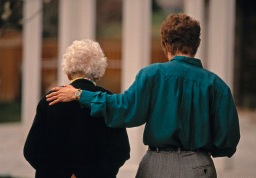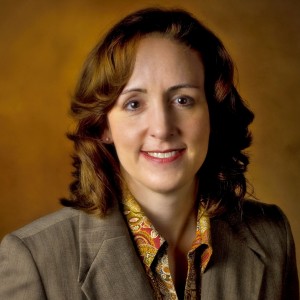Millions of Workers Struggle With Elder Caregiving
By Dr. James Palermo // June 23, 2013
WORKPLACE POLICIES DON'T MEET CAREGIVER NEEDS
ABOVE VIDEO: As our society ages, our workplaces are going to be changing as well. People are working longer and many employees are balancing work with the responsibilities of caring for a parent. Sound Options, a company that provides long and short-term senior care services in the Seattle, WA area, presents the statistics on how rising eldercare needs are impacting both employees and employers and highlights what business owners can do to adapt and keep a robust workforce.
According to statistics from The National Alliance for Caregiving, 52 million caregivers provide care to adults (aged 18+) with a disability or illness, 43.5 million of those adult family caregivers care for someone 50 plus years of age and 14.9 million care for someone who has Alzheimer’s disease or other dementia.
Elder caregiver numbers are projected to progressively increase as more people develop chronic illnesses and the aging “Baby-Boomer” generation pushes the demographic envelope.
Two studies released last week address the burden and challenges faced by millions of U.S workers responsible for the care of an aging relative.
FOUR IN TEN ADULTS NOW ELDER CAREGIVERS
According to a recently released report on a Pew Research Center survey of over 3,000 U.S. adults, 40 percent of the respondents are now providing care for an elderly family member. Most caregivers were between 30 and 64 years old and many had left the workforce earlier than expected to manage those responsibilities.

The Pew researchers also found that the number of caregivers increased 10 percent between 2010 and 2013, and in an earlier Pew survey nearly half of the survey respondents said they expected to care for an elder relative at some point in their lives.
According to the survey, caregivers are heavy technology users, more than ever seeking resources online, and are much more likely than other adults to take part in a wide range of health-related activities.
Associate Director of the Pew Research Center’s Internet and American Life project and the study’s lead author, Susannah Fox says that the stagnant U.S. economy, which has left many adults without the funds needed to pay for professional elder care, has had a significant impact on the increase in personal elder care responsibilities.
CAREGIVERS LEAVING WORKFORCE EARLIER THAN EXPECTED
Focused on the millions of Americans facing financial difficulties or the risk of losing their jobs if they take time off to care for aging debilitated or disabled relatives, the AARP examined several national studies and used AARP member surveys to evaluate the changing workforce demographics and the impact on working caregivers of the increasing demands placed on them by their role as caregivers.
The AARP report, “Keeping Up With The Times: Supporting Family Caregivers with Workplace Leave Policies,” found that:
- One in five workers aged 45 to 74 expected to take time off work to provide care for a spouse, parent, or other aging relative in the next five years;
- One in four current retirees left the workforce earlier than planned in order to care for an ill spouse or relative; and
- 74% of adults currently providing elder care have overlapped their care-giving duties while remaining in the workforce.
WORKPLACE POLICIES LIMITED AND STAGNANT
The report also addresses related public policy and offers policy recommendations to strengthen family and medical leave policies in the workplace.

“Even as workforce participation and care giving demands are increasing for caregivers, workplace policies protecting or supporting them have remained stagnant,” Lynn Feinberg, senior strategic policy adviser with the AARP Public Policy Institute and author of the report, said in a statement.
According to the report, the Family and Medical Leave Act (FMLA) limits employee leave time to caring for elderly relatives or spouses by excluding in-laws, grandparents, aunts, or uncles; and is useless for many U.S. employees because it is unpaid and unavailable to those working for businesses with fewer than 50 employees.
FMLA NOT AFFORDABLE FOR MOST
Study results suggest that nearly two-thirds of the employees eligible for FMLA leave do not take it because they cannot afford to go without pay or are afraid to lose their job. “The aging of the population, changing workforce demographics and increasing demands on family caregivers are colliding at the expense of working caregivers,” Feinberg says.
AARP recommended policy solutions that could ease the burden on both care givers and employers include unpaid family and medical leave, paid family and medical leave insurance and earned sick time.
EMPLOYER COLLABORATION, CAREGIVER TEAMS KEY
Dr. Rosemary Laird, founder and Medical Director of the Health First Aging Institute, and the American Geriatric Society’s 2013 Geriatric Clinician of the Year, concurs with Leinberg’s comments related to the limitations of FMLA for elder caregivers. “I see employed caregivers almost every day who are hesitant to use FMLA. As I listen to caregivers in my office, especially in the past few years of economic downturn, I’m hearing that most have tried to work out a way with their employers to balance their responsibilities on the job with time off to manage their eldercare commitments.”

She emphasizes the “tried,” since some employers and the nature of many jobs may not afford the flexibility needed. “This is one reason we see caregivers more stressed than ever.”
Laird, who co-authored a very popular book, Take Your Oxygen First: Protecting Your Health and Happiness While Caring for a Loved One with Memory Loss, advises all caregivers to request collaboration with and support of Eldercare services from their employers, which benefits both employers and employees by helping to avoid the need for the employee to take a full leave. However this requires communities to have services available and patients/caregivers to have the ability to pay for services.
She also stresses the importance of finding a medical caregiving team for the loved one. “This starts with a physician who is knowledgeable and invested in helping the caregiver help the patient, and then includes a range of other healthcare professionals such as nurses, possibly therapists, pharmacists, home care aids, etc.,” Laird said. “Our community is fortunate because this dedicated team approach is precisely what we provide at the Aging Institute. For those outside our area I recommend they look to the American Geriatrics Society physician referral site at: http://www.healthinaging.org/.”











